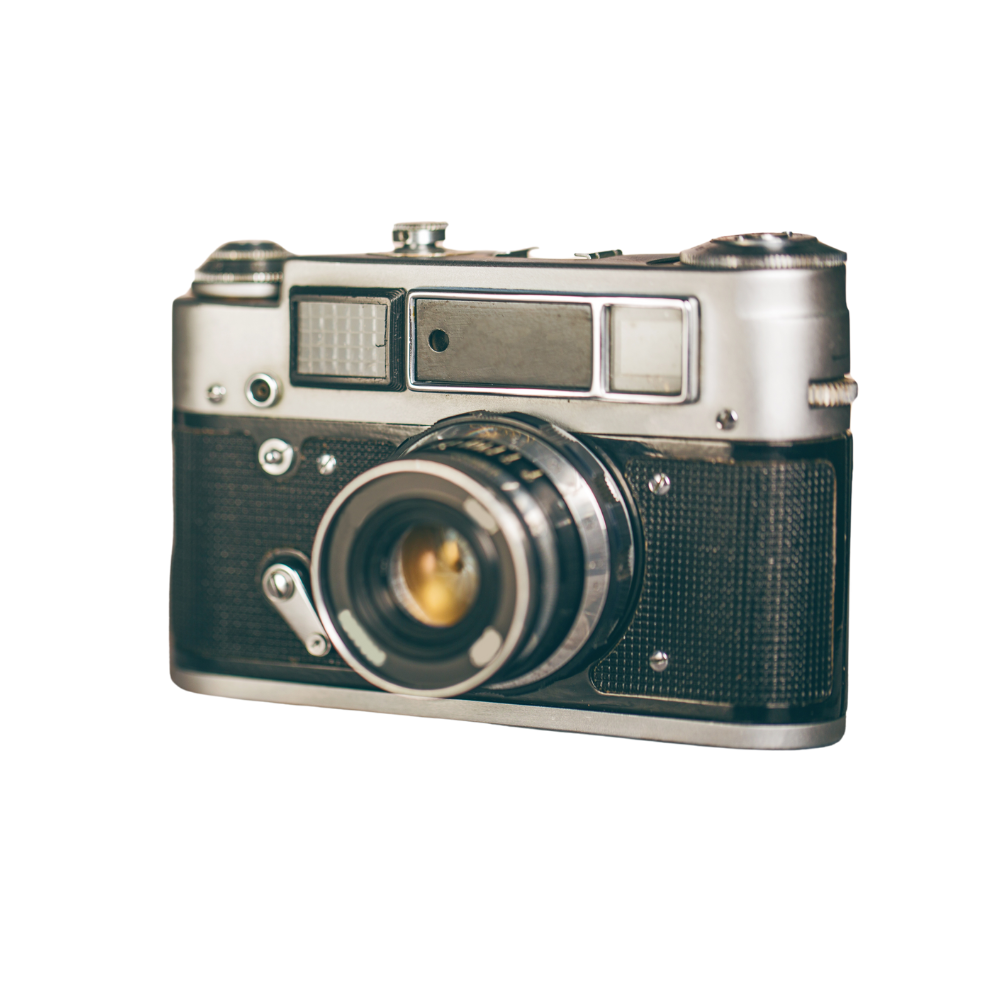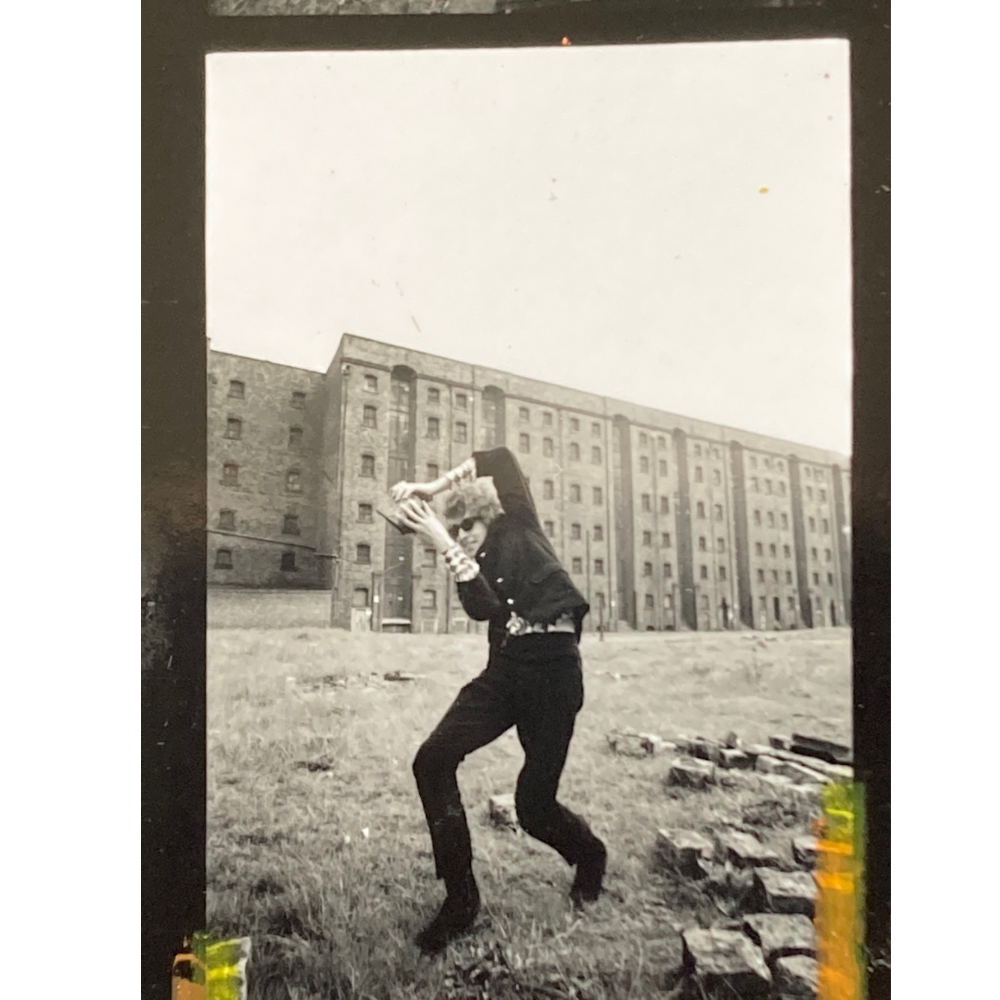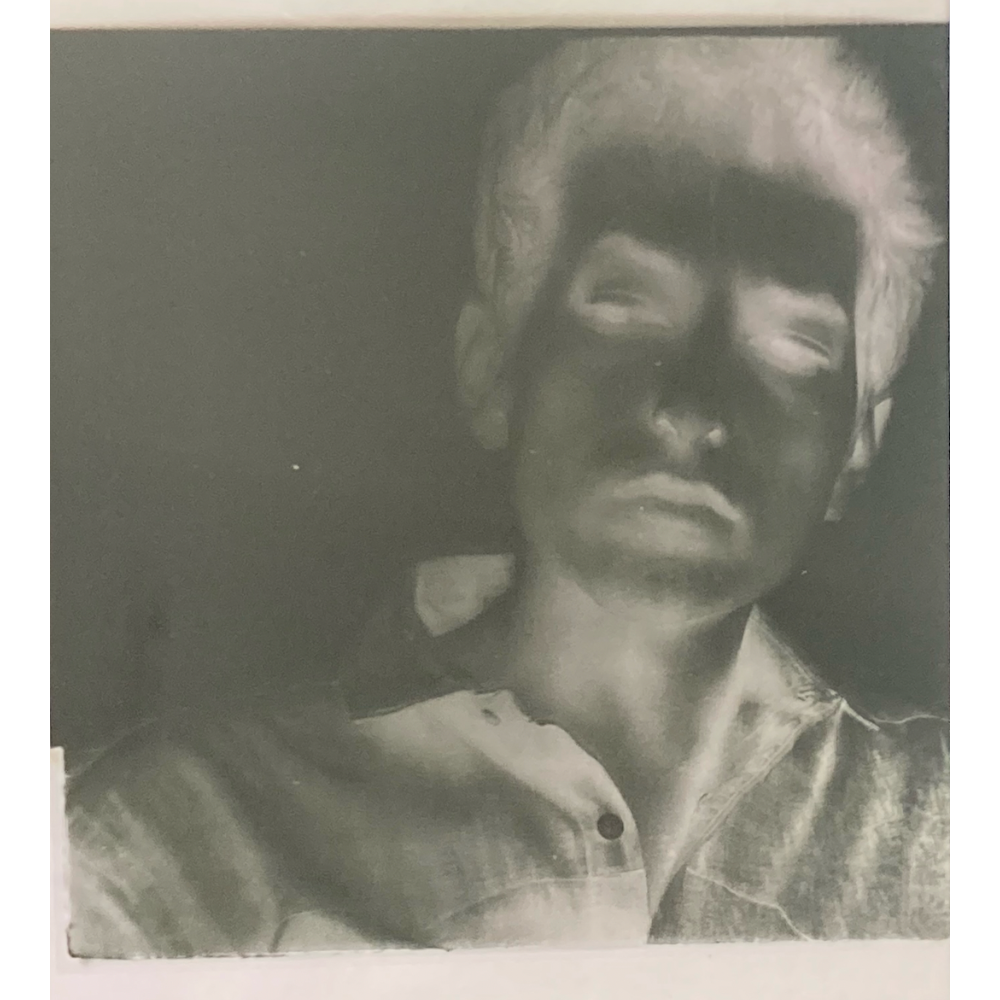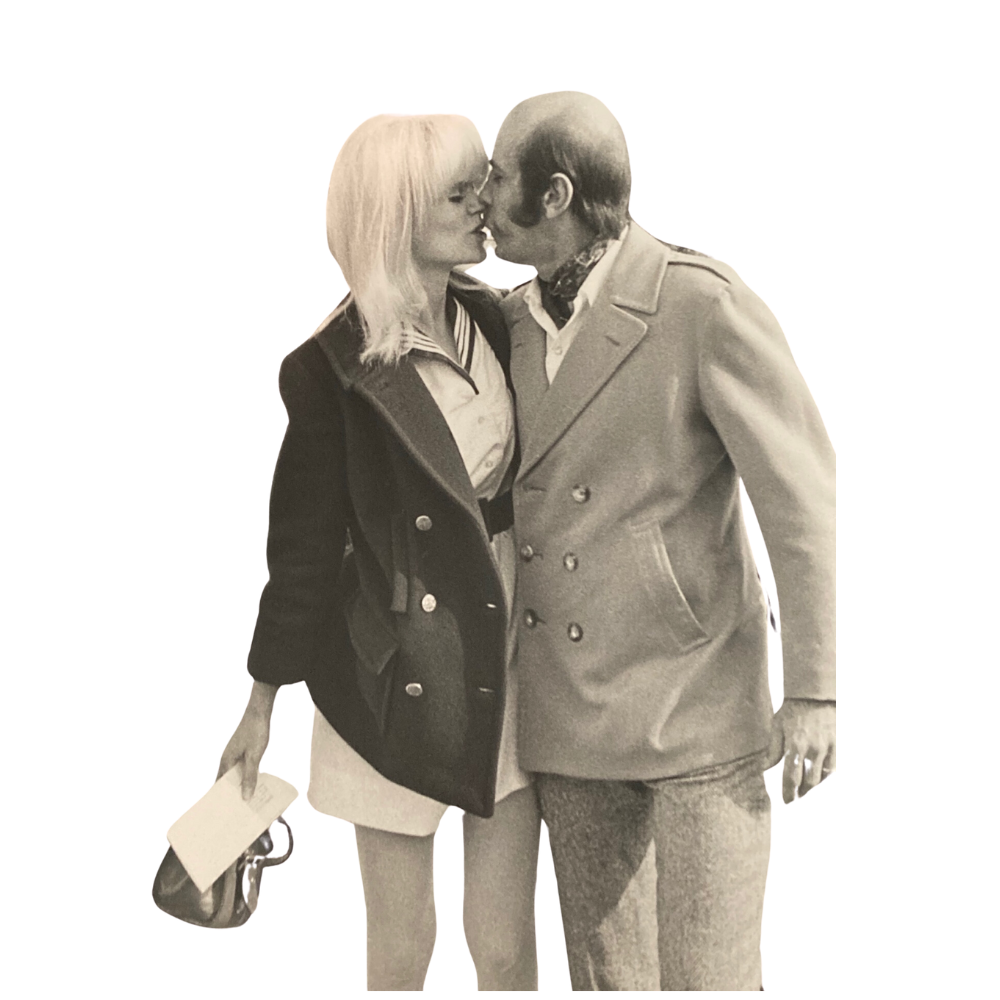Behind the Iconic Images
THE VISIONARY
From Bob Dylan to Janis Joplin
A Journey Through the Artistic Brilliance
Celebrating a Lifetime of Barry Feinstein
FEBRUARY 4th
1931
Barry Feinstein—given first name Bartram, and last name to rhyme with wine—was born in Philadelphia on February 4, 1931. He was the only child of David and Rose Feinstein, a building manager and a housewife. Feinstein grew up in the skinny waist of Philly, squeezed between the Schuylkill and Delaware Rivers, just north of Center City.
A strong, athletic boy, he was a running back on his high school varsity football team, and won a scholarship to the University of Miami. Instead of becoming a star in Florida, though, he left school as the United States entered the Korean War, serving in the Coast Guard as a bosun’s mate. Feinstein left the seas to fetch up in Atlantic City, where an uncle in the casino business set him up to take photographs of horse and motocross races at the local racetrack—operated by Grace Kelly’s father—and for the annual Miss America Pageant. From horses, motorcycles, and beautiful girls came the career of one of the 20th century’s most culturally, and artistically, significant photographers.
“I think Barry was an incredibly great photographer as I still do to this present day.”
—Bob Dylan
1950’s
Barry makes connections
Feinstein learned from masters working with photojournalist Ike Vern for LIFE magazine, and with Lou Kellman, when he was in his mid-20s. Kellman was a Philadelphia legend, who had started in the movie business as a child projectionist in silent theaters, and who in 1955 made his first feature film with Feinstein’s help. “The Burglar” showcases Jayne Mansfield in her first starring role. When Kellman sold “The Burglar” to Columbia Pictures, Feinstein went west too, as a production assistant for Harry Cohn at Columbia as a production assistant. Not yet 30, Feinstein worked on widely varied films in the late 1950s: “Pal Joey,” “4:10 To Yuma,” “Bell, Book and Candle.” In 1959, he traveled to Spain and England with the film crew for “The 3 Worlds of Gulliver.” His still black and white photographs, though, began garnering him more and more attention and acclaim. The Hollywood sign from behind, its letters showing the wickerwork of bars and supports propping them up like the false fronts of an old Western town on a movie set. William Wyler’s Oscar. The pill container labeled chloral hydrate on the bedside table of Marilyn Monroe the morning after her death. Feinstein took this last photograph when a Los Angeles cop he knew from riding motorcycles around town allowed him, and him alone, access to the front of Monroe’s apartment building for five minutes. Barry stepped up to the building, and shot what he saw through a window.
1960’S
Barry marries Mary
Barry and Mary in front of Buckingham Palace, 1965
An early first marriage ended in divorce. In 1963, Barry married Mary Travers, the beautiful blonde centerpiece of the popular folk trio Peter, Paul and Mary. Though much of their time together was peripatetic, as Travers circled the world performing and Feinstein did the same in his career, they made a home in Connecticut, and their daughter Alicia was born there in June 1966.
That year marked a moment that would shape the rest of Feinstein’s life and career: not only the birth of his first child, but his travel during the first half of the year on a world tour with Bob Dylan, a film crew led by D.A. Pennebaker, and four out of the five men who would later perform as The Band. Mary accompanied him on part of the 1966 tour before going home to have their baby; a postcard she sent to Feinstein’s parents from Australia announcing their departure for Europe, and made of a piece of kangaroo skin, survives in Feinstein’s archives. Feinstein’s intense documentary photographs of Dylan from the European leg, and particularly in England, Scotland, and Ireland—on the ferry wharf on the banks of the River Severn at Aust; romping in a rubble-strewn field and huddling in a doorway with local children in Liverpool; looking out a train window in Ireland; hiding behind his shades in an empty theatre; and so many Caravaggio-lit poses on stage—remain some of the best-known images of the singer-songwriter.
At home in Connecticut, undated
1963
Barry & Dylan Meet
Bob and a brick, contact sheet detail, Liverpool, 1966
Feinstein and Dylan had met in 1963, through Mary and the manager she and Dylan shared, Albert Grossman. Grossman had put together the trio of Peter Yarrow, Paul Stookey, and Mary in 1961, and signed Dylan as a client the following year. When Grossman needed his Rolls-Royce driven back to New York from Denver in August of 1963, Feinstein volunteered—with Dylan riding shotgun. The car had broken down and been repaired, and Albert insisted on having the receipts when Feinstein and Dylan picked it up. The men bonded as they drove over crashing a camp meeting and listening to the preaching and music, over racing a freight train in the Nebraska night. Along the way, Barry photographed Bob asleep in the car, stark amidst mesas and little tufts of desert scrub…or perhaps it was Bob who photographed Barry? There’s a clue that will tell you on Feinstein’s contact sheet of the images, one of which was later used on the album cover for Delaney & Bonnie & Friends On Tour With Eric Clapton (1970). What a trip that must have been.
The black and white cover portrait for The Times They Are A-Changin’ (1964), in which the 22-year-old Dylan looks like an ancient, determined survivor of all America’s past, is by Feinstein. He would continue to photograph, collaborate with, and maintain a friendship with Dylan through their careers.
60’s-70’s
Focus: Album Covers
Barbra Streisand, Stoney End, original cover artwork, 1970—and Barry’s license plate.
Feinstein’s album cover photographs are, and will endure as, some of the most important and beloved art of 1960s and 1970s rock and roll and popular music. His capabilities as a graphic designer, as well as a brilliant knower of popular culture, pour off every iconic—truly the only word—cover image. George Harrison, a close friend of Barry’s from the middle 1960s, with long hair tumbling from under a floppy hat down past his shoulders, sitting on a stool with his feet akimbo in a pair of Wellington boots, surrounded by his misty lawns at Friar Park and a scatter of garden gnomes that were Barry’s idea. Janis Joplin, 27 years old, in resplendent color on a love seat in front of a crinkled blue drape, pink feathers in her hair and a cigarette and drink in her hands, on the day before she died. The filthy toilet of the Rolling Stones’ Beggars Banquet, to which Barry supplied pertinent graffiti like his full name, Bartram, and a note to his then-wife: “Dear Carol I want you to know that I love you when I was sitting here. Barry.” The Byrds in a fisheye lens. Ike and Tina Turner in whiteface makeup, biting into sections of watermelon and winking forcefully at the camera as they mock and deny stereotype, on the cover of Outta Season (1969). Barbra Streisand on a red sofa in Feinstein’s own red pickup truck with his personalized license plates, red chairs in the distance, dwarfed by the Mojave Desert and Sunrise Mountain.
1968
Grossman Connection
Original negative, Bob Dylan, The Times They Are A-Changin’ cover, 1963
The Grossman connection drew both Feinstein and Dylan to Woodstock, New York, where Grossman had a home with guest cottages over many wooded acres, and properties including his offices, a recording studio, theater, and restaurants in Bearsville. Both men worked at the same time on oddly creative movies, Dylan’s a French nouvelle vague-inspired thoughtpiece and Feinstein’s—which he co-produced with Yarrow—a psychedelic exploration of hippies, free love, and flower power filmed in Woodstock, New York City, Los Angeles, and Joshua Tree. Feinstein’s movie, You Are What You Eat (1968) was surely born of his work as a cameraman for Monterey Pop (1967) and the New Orleans acid trip section of Easy Rider (1969). The same faces appear in both Feinstein’s and Dylan’s films: Rick Danko, Richard Manuel, Tiny Tim, and recognizable Woodstock locals. Dylan’s movie remains unreleased; Feinstein’s You Are What You Eat (1968) deserves recognition today for its kaleidoscopic scenes and live performances, as much as for its splendid soundtrack.
1963
Marriage & Motorcycles
Carol and Barry, wedding day, 1969
In 1968 Travers obtained a Mexican divorce from Feinstein. He married model and actress Carol Wayne, who appears in You Are What You Eat and was best known as the curvaceous “Matineé Lady” on Johnny Carson’s Tonight Show, in 1969. They made their home in Los Angeles and Joshua Tree, and their son Alex was born the following year.
Barry and Alex, Joshua Tree, 1970
Feinstein continued to photograph Hollywood celebrities and politicians as well as musicians, and his friendship with Steve McQueen was cemented through their love of roaring through the Hollywood hills on motorcycles. His portraits of McQueen with his beloved race cars, and on the set of Bullitt (1968) defined macho cool from the moment they hit print, and have kept McQueen in the popular eye since his early death in 1980.
cool defined: McQueen and his Triumph, 1968
Wayne and Feinstein were divorced in 1974. In that same year, Feinstein joined Dylan and The Band on a two-month United States tour that was Dylan’s first since 1966. His behind-the-scenes portraits of the men, their families and friends are more arresting than a film could have been: spots in time, moments on the road. From backstage hijinks to quiet contemplation, exercising, children’s birthday parties—Barry’s quiet camera saw everything.
Later Years
A Move to Woodstock
Bob Dylan, Levon Helm, Barry Feinstein, contact sheet, 1974
Judy behind the wheel, undated
Feinstein settled chiefly in Woodstock as the 1970s ended, and continued to work as a photographer, filmmaker, and graphic designer. He married a last, and lasting, time in the little Catskill town he already knew well; his wife for 33 years was artist Judy Jamison. However, both Feinstein’s life, and capability to hold and operate cameras, were seriously damaged in 1993, when a drunk driver—a local off-duty cop—ran a red light and totaled Feinstein’s car. His injuries were life-threatening, and though he recovered, he was in near-constant pain, with his mobility damaged significantly. At the end of his life, he needed a walker and then a wheelchair.
2008
A Renewed Interest
Von Dutch contact sheet, Reseda, 1966
A major book project in 2008 brought renewed attention to Feinstein’s art. Dylan had in the early 1960s written a series of short poems inspired by some of Feinstein’s Hollywood photographs, and these were published together under the title Hollywood Foto-Rhetoric: The Lost Manuscript. As Charles McGrath said in his favorable New York Times review, either half of this collaboration would be worth having. Together, Dylan’s surreal, puzzling Beat-poetry sketches and Feinstein’s stark shots of the world-famous, their faces and settings, make one wish they had done more books together.
In that same year, Feinstein and Timothy White had a joint show in New York of their photographs of Kenny Howard, better known as Von Dutch, and Lawrence DeSmedt, or Indian Larry—artists capturing artists. It seemed ironic, and also perfect, to see Barry in what had once been CBGB, surrounded by his images of Von Dutch and motorcycles—and by hundreds of old friends, and fans old and new.
2011
OCTOBER 20th
Barry Feinstein died on October 20, 2011, in Woodstock. he is survived by his wife Judy and his children.
“ their stark atmosphere. Obviously the subject matter. I liked the angles Barry used in the pictures… the shadows and light, that sort of thing.”
Barry Feinstein’s Legendary Album Covers That Defined Music History
The Art Behind the Sound
Barry Feinstein’s album covers are more than just packaging; they are artistic expressions that complement and enhance the music within. Over his illustrious career, Barry crafted nearly 500 album covers, each one a masterpiece in its own right. His ability to convey the essence of an artist’s sound through imagery is unmatched, making his work a pivotal part of music history.

See Barry Feinstein’s Work
HANG A PIECE OF BARRY IN YOUR HOME.











































